We bring you some welcome news to kick off the new year: 2024 was the year with the most renewable electricity ever generated on the island of Ireland. It looked a bit wobbly there for a bit, but a windy December has helped 2024 edge out 2023. Our detailed annual review will arrive later in January; for now, please enjoy our last monthly update of 2024.
Note: This article was updated January 22nd, 2025, to incorporate full utility-scale solar SCADA data from Eirgrid and to remove a note on the end of coal generation in Ireland which is set to occur towards the end of 2025, rather than 2024 as we originally stated. Additionally, our 2024 review is now available.
Summary
Generation from renewable sources during December 2024 was equivalent to 44.7% of all-island electricity demand:
- 40.6% wind
- 1.2% biomass
- 2.3% hydro
- 0.5% solar
1669GWh from renewable sources was the second highest amount yet seen during a December month, behind only December 2023's exceptional 1959GWh.
As mentioned in the introduction above, 2024 finished with the most ever generation from renewables: 15352GWh - just ahead of 2023 - and equivalent to 37.5% of all-island demand. This was largely due to the growth in solar during 2024. 2020 retains the record for most amount of demand fulfilled by renewables. This is mostly due to that year having had exceptionally low demand and partly due to general year-on-year rise in demand afterwards. We will have much more on 2024 in our annual review, arriving later in January.
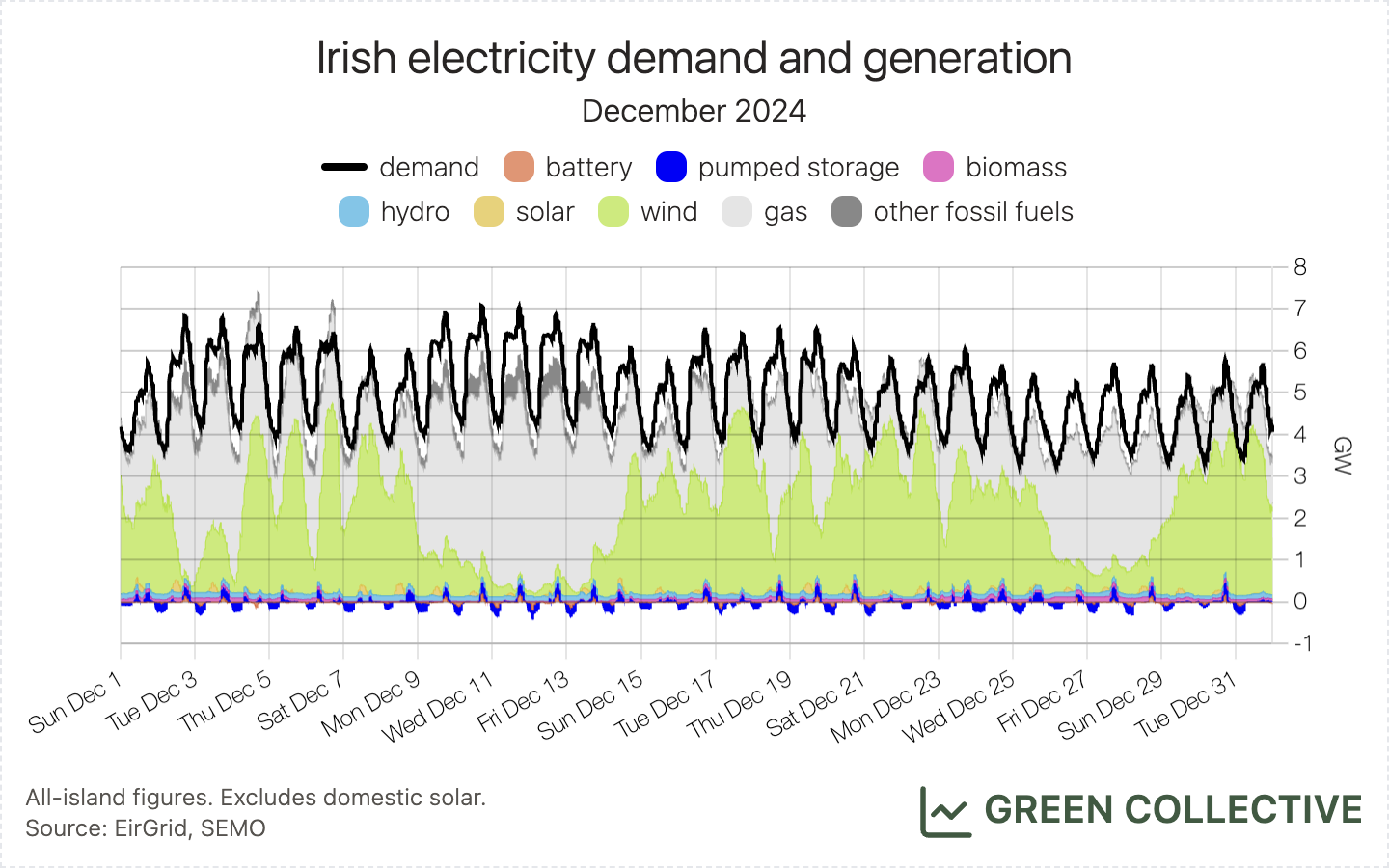
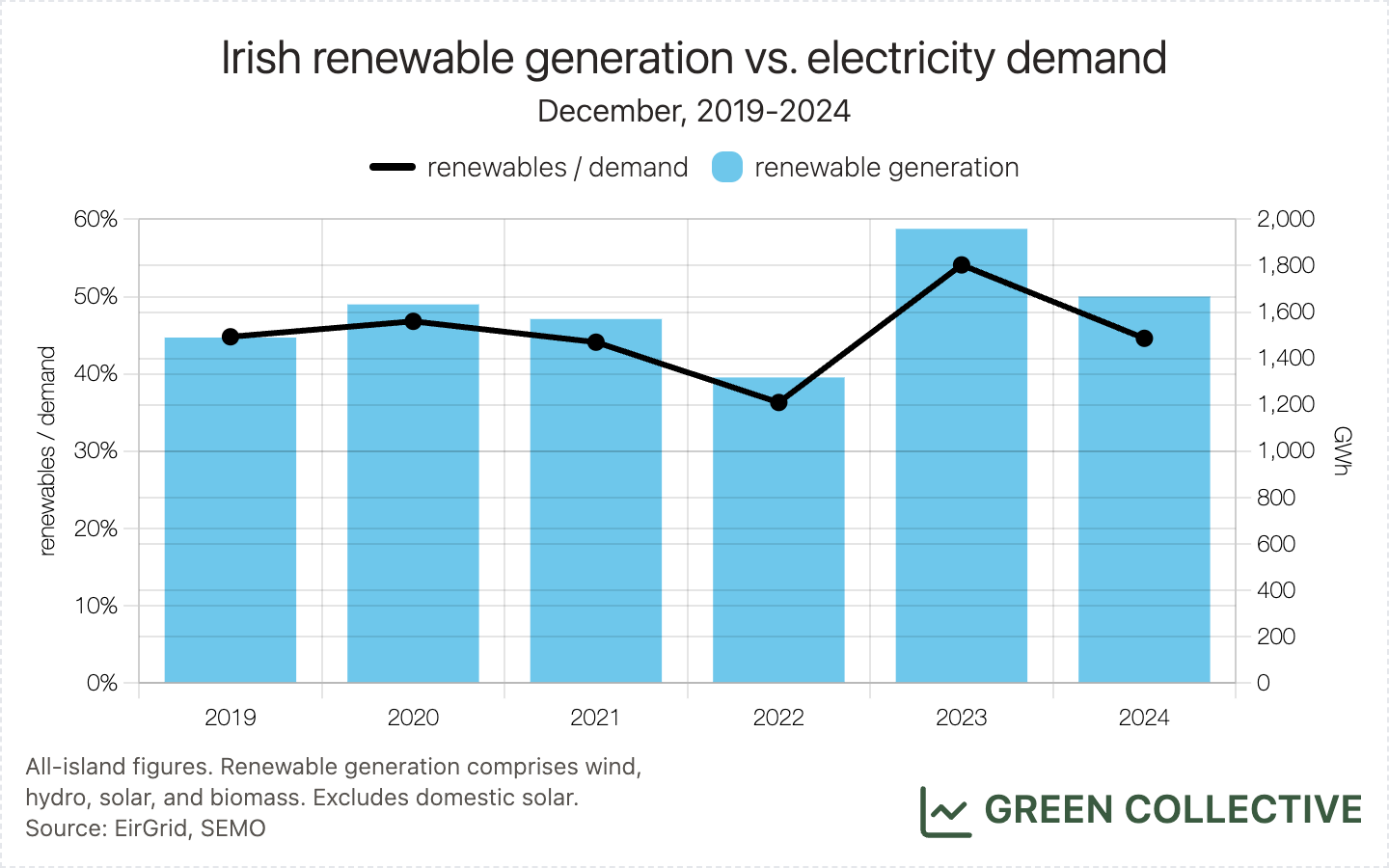
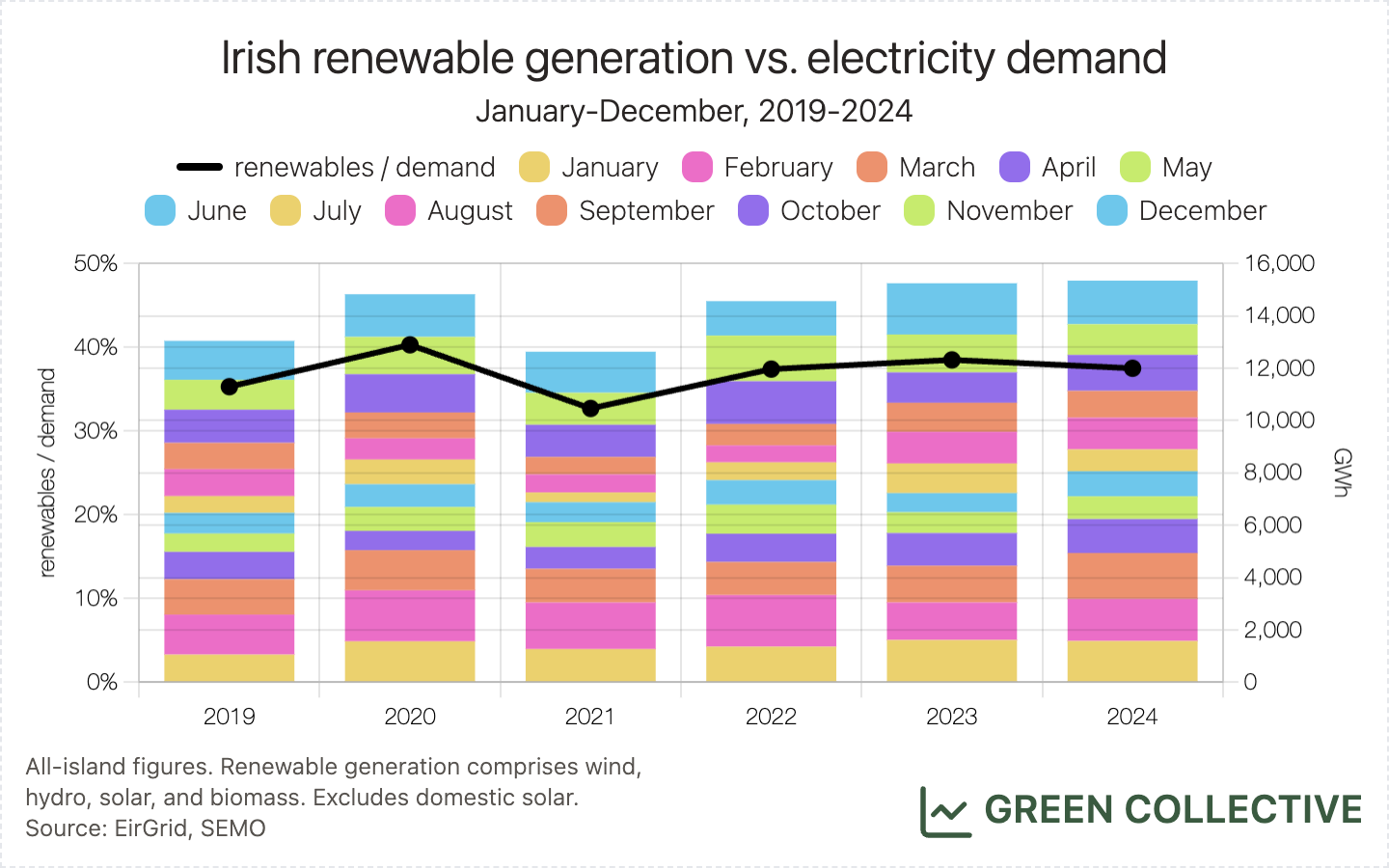
Wind
1517.6GWh was the second highest amount of wind generation for a December month, behind only 2023's exceptional 1820GWh. This was equivalent to 40.6% of demand.
As usual, Cork and Kerry were the top two counties for wind generation by some distance, accounting for approximately 150GWh (or 4% of the month's all-island demand) each. In terms of movers and shakers, Offaly placed in the top 5 for wind generation for the first time, placing just behind Galway at approximately 100GWh. We can attribute this to Derrinlough Wind Farm which has been ramping up since September. With the similarly-sized Yellow River Wind Farm having come online in December, Offaly is sure to become #3 soon. More on County Offaly and its clean energy at the end of this newsletter in the Hatches and Dispatches section.
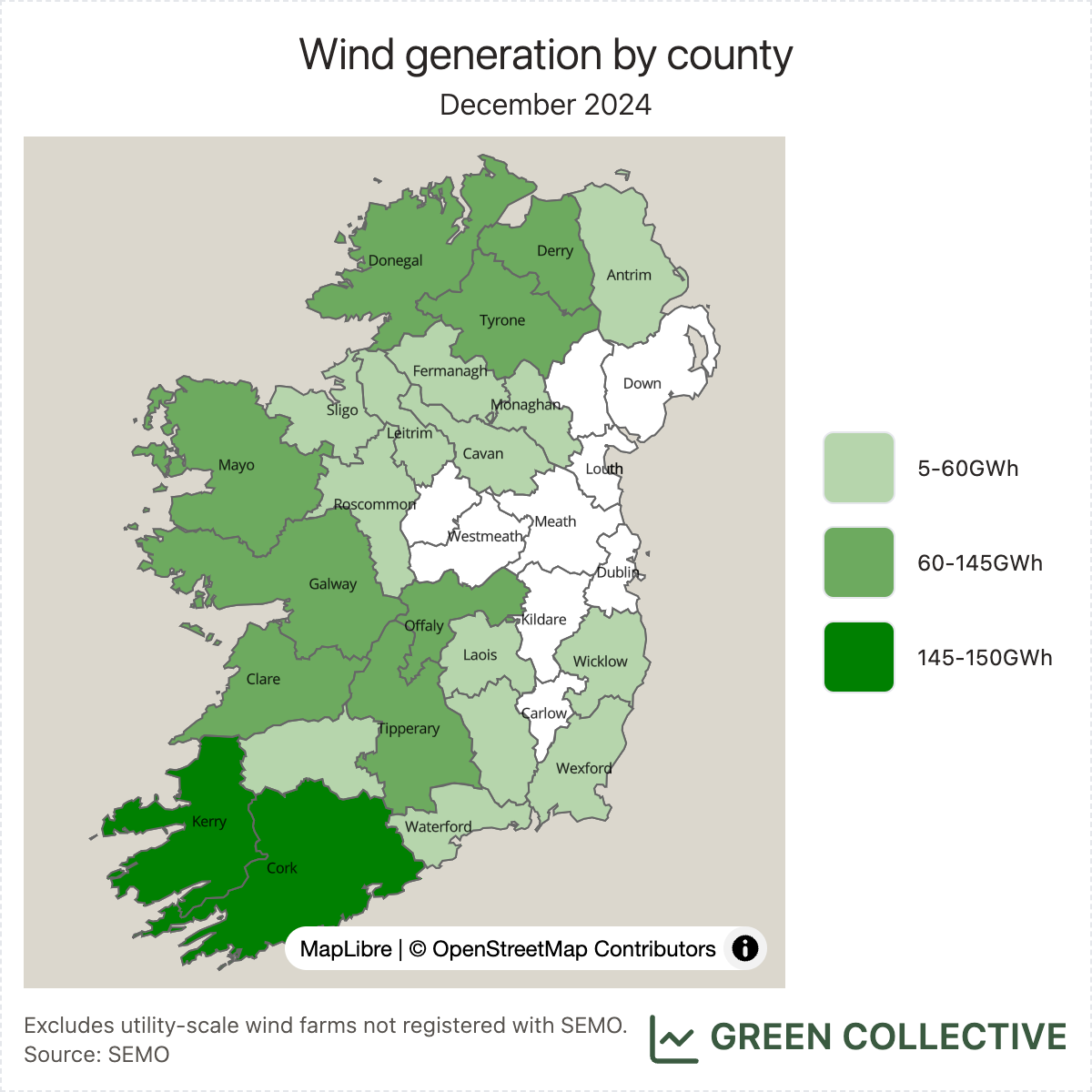
Solar
Solar farms produced 17.3GWh during the month. While obviously very far short of the 100GWh+ months we saw during the summer (and we are no longer seeing daily peaks that can make a significant dent in mid-day load), even the unrevised figure represents a very welcome year-on-year increase of more than 50% on December 2023's 11.2GWh.
Fossil fuels
1735.8GWh from fossil fuel sources was equivalent to 46.5% of the month's all-island demand. Both are the second lowest figures for a December month for which we have data (2018), ahead only of 2023's notably low 1476.2GWh/40.8%.
We estimate that for each kWh of electricity generated during December 2024 the Irish grid emitted between between 88g and 452g of CO₂, for an average of 224gCO₂/kWh. Again, this was the second lowest average figure we have observed during a December month, slightly behind only December 2023's 208gCO₂/kWh which was one of the lowest monthly averages ever.
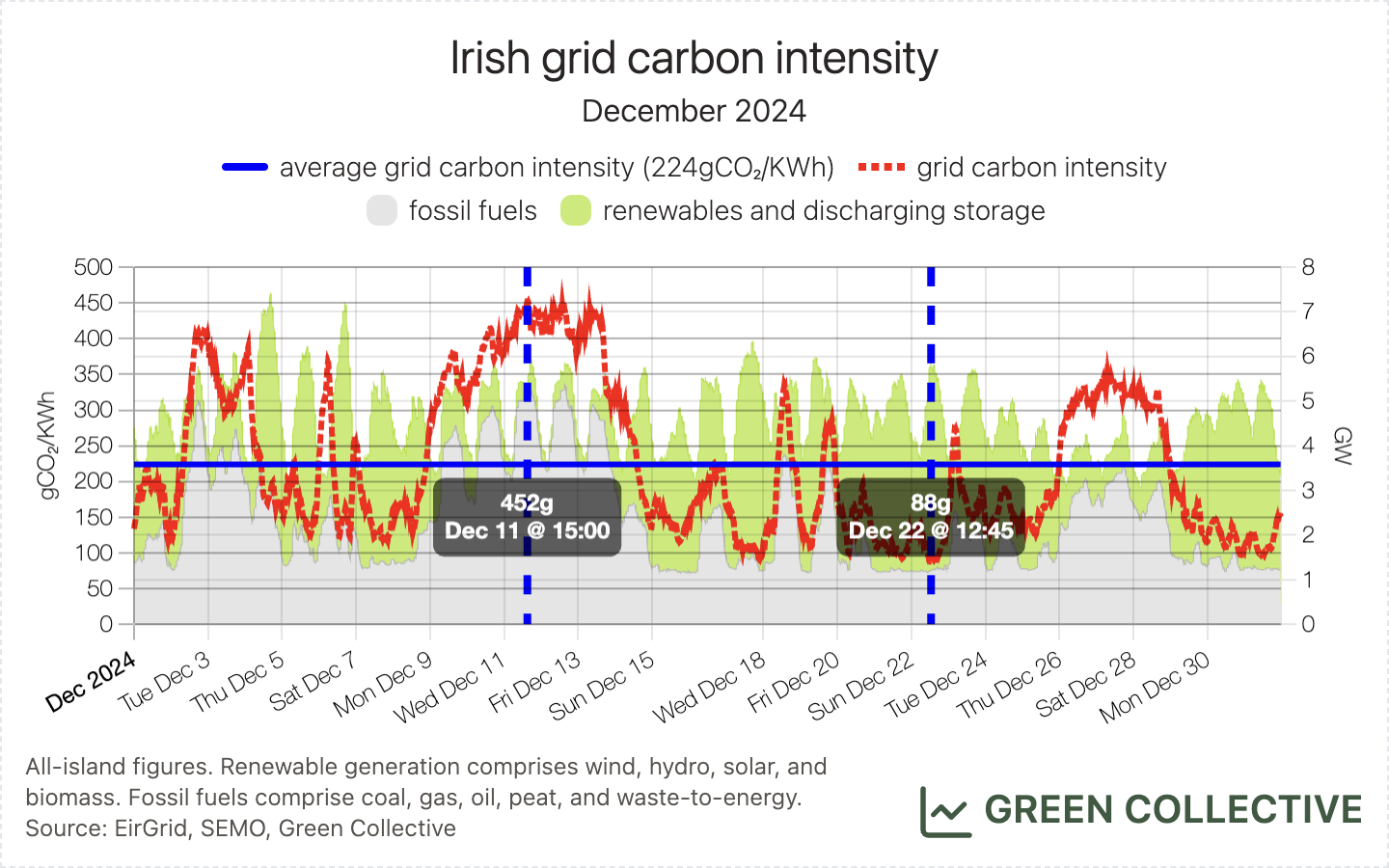
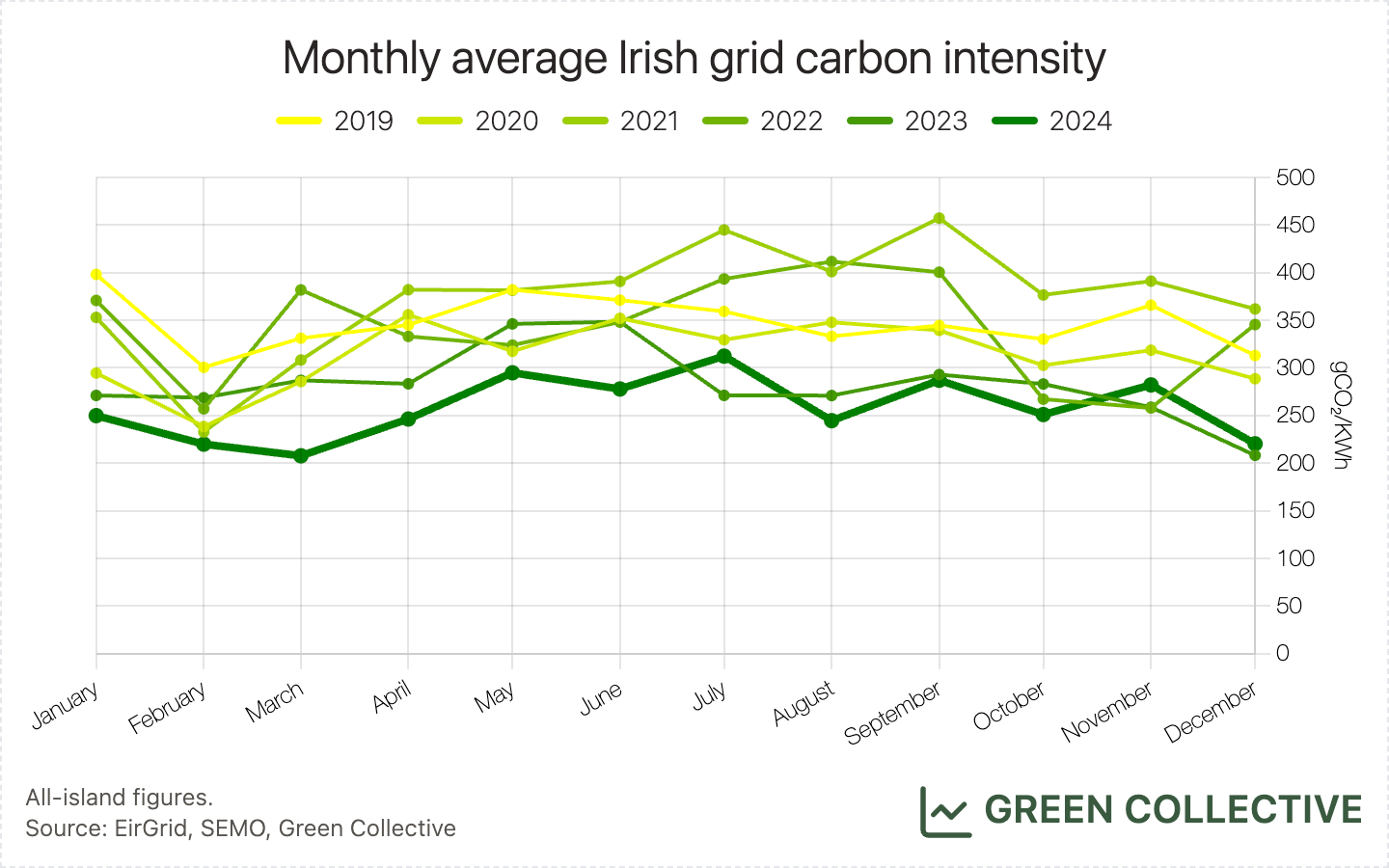
Storage
Thanks to a recent change in incentives discussed at length in last month's recap, batteries continue to contribute more and more to peak load. Peak discharge exceeded 200MW on two days during December (having happened for the first time only in November) and we observed a new record in terms of demand being met: 3.4% on December 20.
Hatches and Dispatches
- Rathnaskilloge Solar Farm in Waterford connected to the grid in early
December. County Waterford is now on the map of solar generation that we can
track and joins this growing list of solar counties: Antrim, Cork, Kildare,
Meath, Tipperary, and Wexford. Yellow River, the newest wind farm, started
exporting to the grid on December 11. Yellow River along with Derrinlough and
Moanvane - also in County Offaly - make up the majority of new wind capacity
in Ireland in 2024. To read more about the rise of clean energy in Offaly
(shown on the map below), head over to our Irish Grid 2024
Wrapped.

- The Greenlink Interconnector completed “coupling” for the first time on
December 13. Since then, we have seen some activity from this new
interconnector between Ireland and GB (shown on the chart below), as this
high-voltage direct current (HVDC) submarine power cable is expected to ramp
up its operations soon and has a maximum capacity of 500MW.
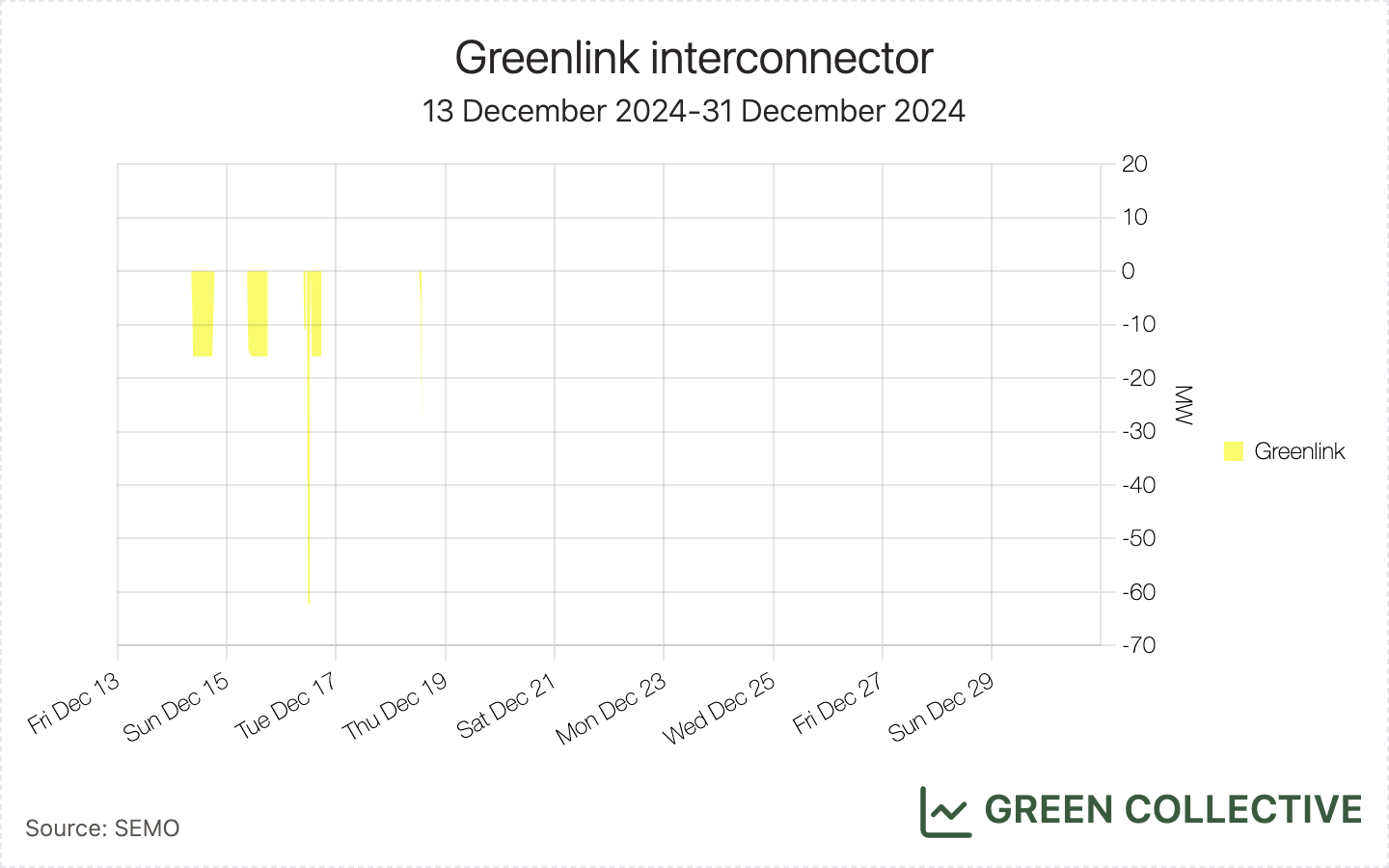
We haven’t seen the coupling of the Greenlink Interconnector covered in the news at all. Perhaps these stories will eventually be covered once ESB/EirGrid finish putting together their press releases! Facetiousness aside: journalists, you are more than welcome to use these tips.